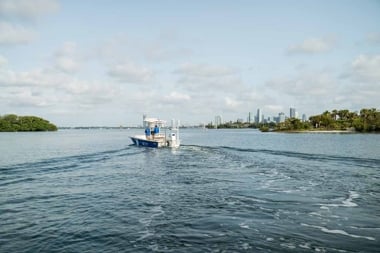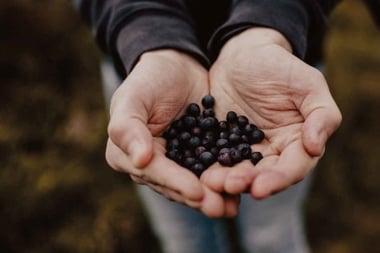
It's no wonder straw bale, rammed earth, and hempcrete houses re getting more popular: they're low maintenance and healthier than conventional houses.
It’s no wonder straw bale, rammed earth, and hempcrete homes are getting more popular: they’re low maintenance, rodent-proof, fire-resistant, eco-friendly, and healthier than conventional houses. These modern mud huts, or green houses, are popping up all over Canada–and they’re slowly edging their way into the mainstream.
Living in Africa for three years taught me a few things about mud huts: they’re sturdy, inexpensive, and environmentally friendly. They don’t contain nasty toxins, and the bits of straw, paper, and odds and ends sticking out of the walls look kinda funky.
Africans build mud huts because the material is plentiful and easy to work with. Same with mud huts here in Canada–plus they’re often healthier than many conventional buildings. For instance, rammed earth can alleviate symptoms of sick-building syndrome (SBS). Straw bale homes are easier on asthma and allergy sufferers than conventional houses. Hempcrete can reduce carbon dioxide emissions, allowing occupants and neighbors to breathe easier.
On British Columbia’s Bowen Island, Ruth Harding, Burns Jennings, and Jayeson Hendyrsan are building their own modern mud huts.
Hempcrete Homes
Before Jayeson Hendyrsan and Kim Brooks met, they’d separately compiled thick file folders of eco-friendly building techniques. Later, as a couple with newly acquired land and construction already in progress, they decided on hempcrete.
Hempcrete consists of concrete and lime-soaked, THC-free hemp (an inexpensive renewable resource in Canada). The lime keeps rodents, water, and mold away. Hempcrete is soft; timber frames are necessary for structural support. Plaster of many colours and textures covers the hempcrete.
Hendyrsan finished building in 2004 and is now working on an addition, which will be a self-contained, two-floor home. They’ll live there with their 13-year-old daughter and use the smaller space to accommodate extended family.
Though he still frequents salvage yards, garage sales, and demolition sales for reusable wood, windows, and other materials, Hendyrsan is mechanizing more of the process and doing less hand labour this time. For instance, he won’t use a spaghetti strainer to fish the hemp from the soaking buckets to dry.
The cost of hempcrete is on par with a regular wood frame house.
Hempcrete Benefits
Not only does hempcrete retain heat–Hendyrsan’s house stayed warm for 12 hours during Bowen Island’s power outages last winter–it’s fire- and soundproof. Hempcrete doesn’t succumb to rot, infestations, or mold.
Hempcrete Drawbacks
Industry standards aren’t in place, and the finishing aspects aren’t easy. “If you want to go really green, it costs more,” says Hendyrsan. Building green, especially on your own, requires skill, time, energy, and perseverance.
Hempcrete Surprises
“No, you can’t lick the walls and get high–we have better things to do!” says Hendyrsan. But he puts his mouth where his money is, using hemp seeds and oil in cookies, oatmeal, salads, and pasta. He makes hemp milk by blending honey, seeds, and water, with the occasional dash of cinnamon or vanilla. Research shows hemp may help reverse high blood pressure, diabetes, and obesity.
“A house made of natural material radiates positive energy,” says Marie Širok?f the Czech Hemp Association. This positive energy may explain Harding’s and Jennings’ hard-to-describe feelings of well-being in their homes.
Straw Bale Homes
Ruth Harding built with straw because she didn’t have much money, she knew she’d need minimal construction help, and she wanted to prove the building inspector wrong (he said there’d never be a straw house on Bowen).
Straw bales, like oversized concrete blocks or bricks, are stacked to create strong, durable, insulated walls. Harding covered them with traditional English lime plaster instead of the oft-used Portland cement. Doing most of the work herself, she mastered her air compressor, navigated scaffolding, installed joists, and hauled shingles.
Harding used, reused, and recycled local resources. Her tightly compacted bales came from Alberta. Sprinkled through the house are reclaimed materials: old-growth flooring (yellow cedar) from a New Westminster tear-down; doors and windows from a West Vancouver demolition; and farmers’ kitchen sinks circa 1953 from England.
Soon after beginning construction, Harding traded her Miata in for a truck.
Straw Bale Benefits
Straw houses offer low environmental impact, high insulation, and the freedom to be wildly creative without getting expensive or complicated. Straw requires little energy to produce, is easily renewable, and diverts farm waste. Compacted straw is fire-resistant and doesn’t attract pests.
Straw Bale Drawbacks
Harding heard, “I’m gonna huff, I’m gonna puff, and I’m gonna blow your house down,” so often, it became the biggest disadvantage. That, and “Ah, c’mon, Ruth, you’re not really building the house all by yourself.”
Straw bale challenges include finding bales with the proper moisture content, ensuring adequate drainage, and coping with unexpected costs. Sometimes construction costs more and takes longer than expected.
Straw Bale Surprises
The deer on Bowen don’t snack on the bales, and though the walls breathe, creatures can’t wiggle in.
Harding couldn’t quite describe how good it felt to be in her straw bale home. She used words such as “organic,” “earthy,” “spiritual,” and “connected.”
Rammed Earth Homes
“Homes are often toxic waste dumps,” says Burns Jennings. His father and father-in-law passed away from toxic exposure-related cancers; now he’s building a healthy home with as small an environmental footprint as they can afford. He and his wife Shauna have two preschool-aged boys.
Using his environmental science background, Jennings is compacting subsoil, cement, and water into forms that’ll be removed later. The walls become a canvas: Jennings can insert shells, beach glass, and “mocked-up fossils of prehistoric trilobites and ammonites” (great for young boys’ rooms). Subtle colour bands will wave through the walls; pictures, quilts, and shelving can be hung if desired.
The upstairs is wood framed (rammed earth is ultra-expensive on two floors). Jennings is using eco-friendly materials: non-VOC paint, formaldehyde-free drywall, and nontoxic glues. Sleep sanctuaries (bedrooms) will conserve energy and limit electromagnetic fields, which can negatively affect sleep patterns and serotonin levels.
Jennings’ goal is to bring rammed earth construction into the mainstream.
Rammed Earth Benefits
Rammed earth homes are built with sustainable, local, eco-friendly materials. The buildings are rodent proof, fire resistant, and maintenance-free. They can’t rot, wash away, or crumble during an earthquake. Their thermal mass acts, says Jennings, “like a rock on a beach that radiates heat for a long time after the sun sets.”
Rammed earth dwellers aren’t likely to contract SBS, which is caused by high carbon dioxide levels in poorly ventilated, moldy, water damaged, and recently renovated or carpeted buildings.
Rammed Earth Drawbacks
They can be labour intensive and expensive; a building code doesn’t exist yet. Because it’s all so new, Jennings isn’t certain about the final cost of the house.
Rammed Earth Surprises
Rammed earth is inorganic subsoil: sand, silt, rock, and/or clay. It’s not earthy soil or packed dirt (as with African mud huts).
Jennings feels good in rammed earth: comfortable and protected. “I think it may go back to the caveman days,” he laughs.
Changing the World
These modern mud huts are more than places to live. “You get the feeling that you might have changed the world in a good way,” says Hendyrsan.





